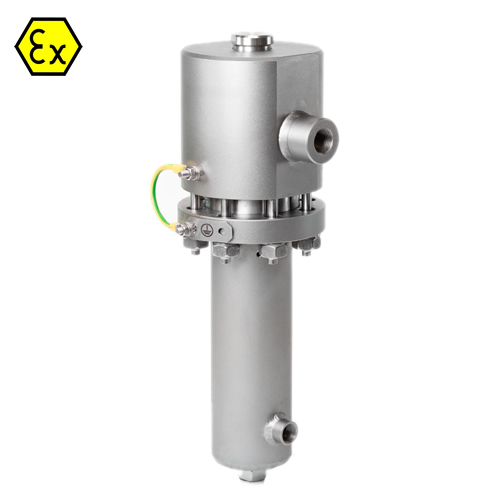
Self-acting pressure reducers are simple control valves offering accurate control while being easy to install and maintain. They control the pressure downstream of the valve without requiring pneumatic or electrical control elements.
The DM 510, 514 ATEX H2 pressure reducing valves are diaphragm, piston or bellows-controlled spring-loaded proportional control valves for high inlet and outlet pressures. They can be supplied with three types of connections: sockets, flanges and welding spigots. Each size of valve may be fitted with three different seats. The valve cone may be fitted with a soft or metallic seal.
The outlet pressure to be controlled is balanced across the control unit by the force of the valve spring (set pressure). As the outlet pressure rises above the pressure set using the adjusting screw, the valve cone moves towards the seat and the volume of medium is reduced. As the outlet pressure drops, the valve control orifice increases; when the pipeline is depressurised, the valve is open. Rotating the adjusting screw clockwise increases the outlet pressure.
The outlet pressure to be controlled is balanced across the control unit by the force of the valve spring (set pressure). As the outlet pressure rises above the pressure set using the adjusting screw, the valve cone moves towards the seat and the volume of medium is reduced. As the outlet pressure drops, the valve control orifice increases; when the pipeline is depressurised, the valve is open. Rotating the adjusting screw clockwise increases the outlet pressure.
These valves are no shut-off elements ensuring a tight closing of the valve. In accordance with DIN EN 60534-4 and/or ANSI FCI 70-2 they may feature a leakage rate in closed position in compliance with the leakage classes III or V, optional IV.
Quality Products & Service Levels
Competitive Pricing Structures
Excellent Delivery Schedules
Ultra-Fast Response Times
Free Technical Support
OEM & Custom Configurations
Tailored Stocking Profiles
Servicing & Assembly Capabilities
